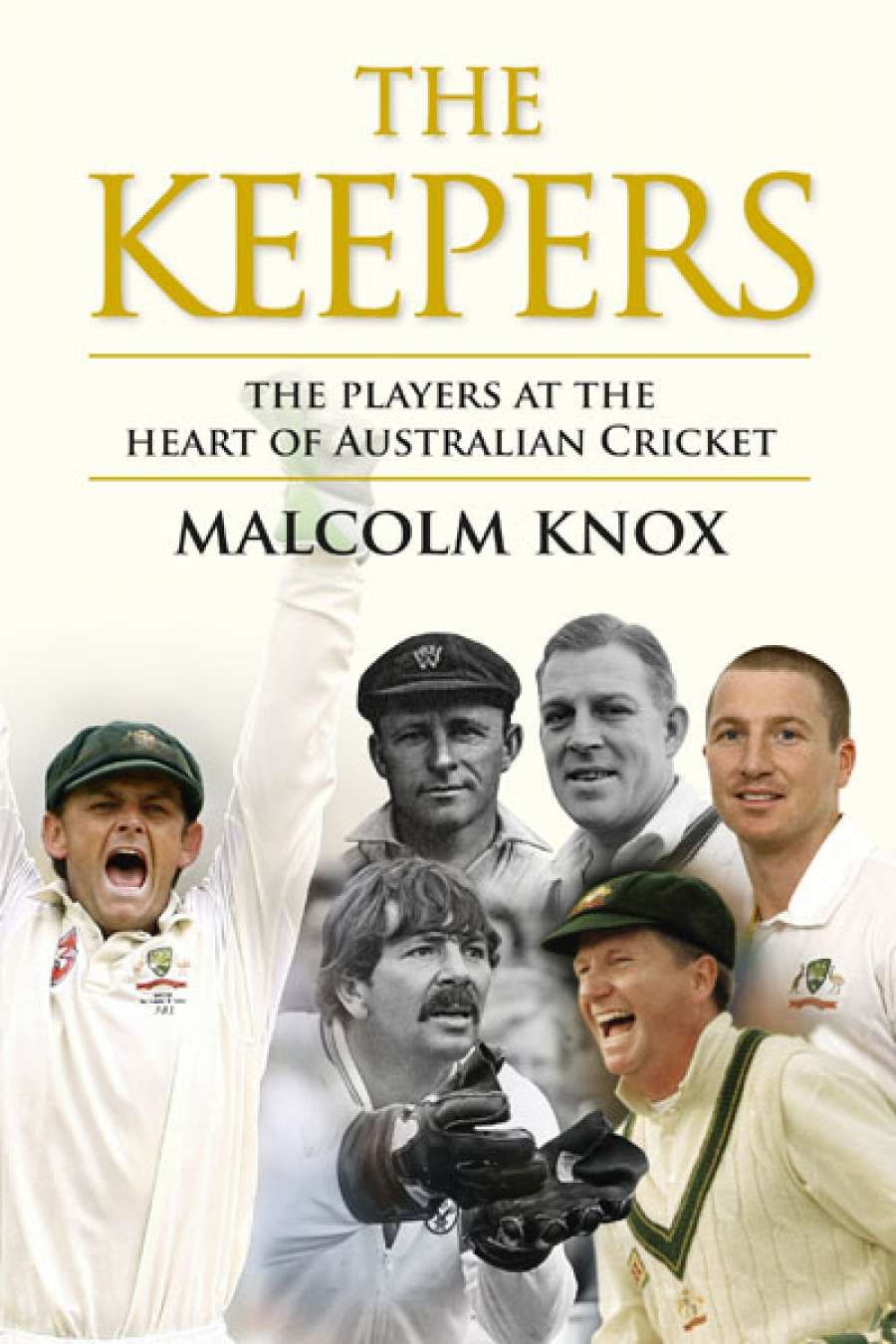
- Free Article: No
- Contents Category: Cricket
- Custom Article Title: Bernard Whimpress reviews 'The Keepers' by Malcolm Knox
- Book 1 Title: The Keepers
- Book 1 Subtitle: The Players at the heart of Australian Cricket
- Book 1 Biblio: Viking, $45 hb, 400 pp, 9780670078523
I would never regard myself as an expert on wicket-keeping. Yet I was struck by the neatness of English gloveman Bob Taylor playing for the Rest of the World against South Australia in 1971. He had a quiet game in Adelaide (two catches, two byes), but the quality and economy of his movement was impressive. Taylor, then aged thirty, had appeared in only a single Test. The flamboyant Indian keeper Farokh Engineer was preferred in four of the five 'Tests' played by the World team that summer. However, as the BBC commentator and writer Christopher Martin-Jenkins would later observe, 'the best thing that came out of World Series Cricket was that Bob Taylor played fifty-seven Tests for England'.
In The Keepers, Fairfax journalist and author Malcolm Knox raises a lot of dichotomies: the flashy keeper versus the understated one; standing up versus standing back; the sportsman versus the gamesman; 'the bowler's chief assistant' versus the keeper–batsman. From the nineteenth-century 'Prince of Wicket-keepers' Jack Blackham via Jim Kelly, Hanson Carter and Bert Oldfield to Don Tallon, Gil Langley, and Wally Grout, the emphasis is primarily on their skills behind the stumps. It is received wisdom that wicket-keepers are born not made.
Knox's main thesis in his book is that wicket-keepers are like the drummers in a rock band. As he writes in his introduction, a captain 'directs his field, the ensemble of the team moves in determined patterns, but always, beneath the melody, lies the beat'. While thirty-four players have kept wickets for Australia in 773 Test matches, the author attempts a re-imagining of our cricket history by retelling its story through eleven of those who have held the office for substantial terms.
As Knox points out, Rod Marsh is the first Australian keeper to win Test selection because of an edge in batting skills; one pitiful example of attempting to turn batsman Wayne Phillips into a wicket-keeper backfires. Ian Healy keeps rivals at bay by improved batting performances. As a worldwide trend towards batsmen-wicket-keepers begin in the 1990s the emergence of Adam Gilchrist as a thrilling game-changer becomes paramount. Not only is he 'the drummer of what was arguably the best band ever put on a field. He was often the lead guitarist and, on occasion, the lead singer too.' Brad Haddin continues the batsman–wicket-keeper role although not dominating to the same degree as his predecessor.
 England batsman Jonny Bairstow plays a shot during the 3rd day of the 1st Test of the 2013 England v Australia Ashes series at Trent Bridge, Nottingham. Brad Haddin is keeping wicket (photograph by Jonny Bairstow via Wikimedia Commons)
England batsman Jonny Bairstow plays a shot during the 3rd day of the 1st Test of the 2013 England v Australia Ashes series at Trent Bridge, Nottingham. Brad Haddin is keeping wicket (photograph by Jonny Bairstow via Wikimedia Commons)
'It is received wisdom that wicket-keepers are born not made'
This is a bold story. Placing his subjects within the context of the wider game, Knox enables the reader to appreciate the forces which inevitably leave players frustrated. 'Paranoia is the gloveman's natural state.' Not surprisingly, many are anxious about their position and wary of rivals. The phrase 'never give a sucker an even break' used by Wally Grout when masking injury to gain selection ahead of Barry Jarman in South Africa in 1957 is repeated in later examples.
In his conclusion, Knox asks a number of wicket-keepers and coaches about the essential ingredients for the job. Among the qualities listed are courage, a strong work ethic, the need to be phlegmatic, thick-skinned, and yet have a sense of humour. It might be argued that these are qualities for a band leader as much as a drummer, yet only Blackham, Jarman, and Gilchrist have led their country, the latter two in caretaker roles. Knox argues that Marsh would have made an outstanding captain.
The book has a few errors, the most ludicrous having Grout taking John Maclean to lunch when he first made the Australian side. Grout had died eleven years earlier. Overall, however, The Keepers is an intelligent and nuanced analysis of a specialist craft and an important addition to cricket literature.


Comments powered by CComment